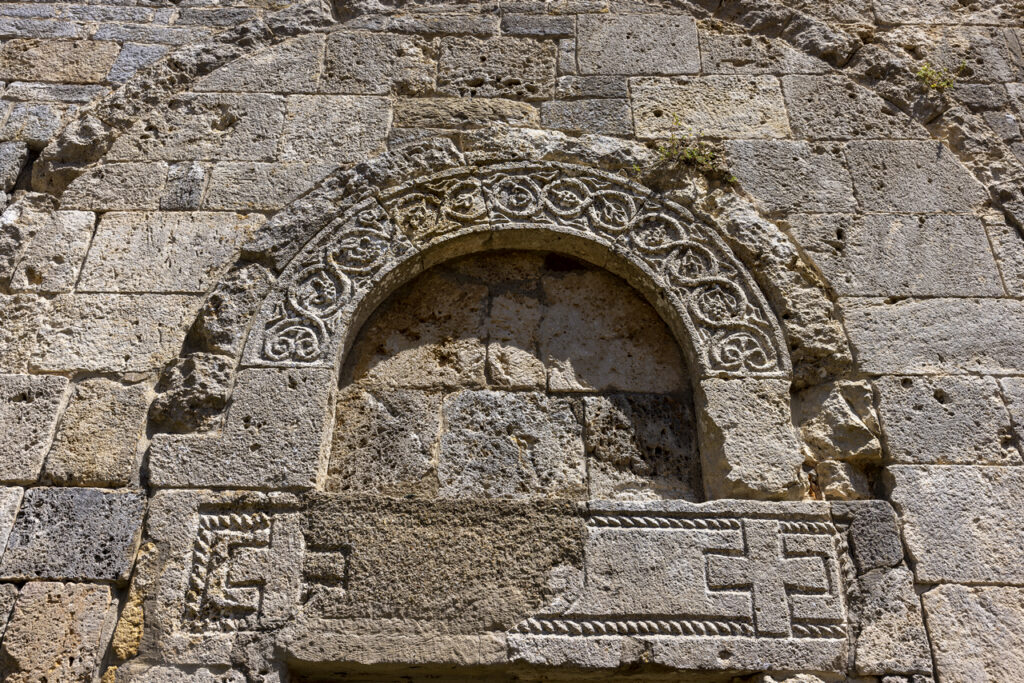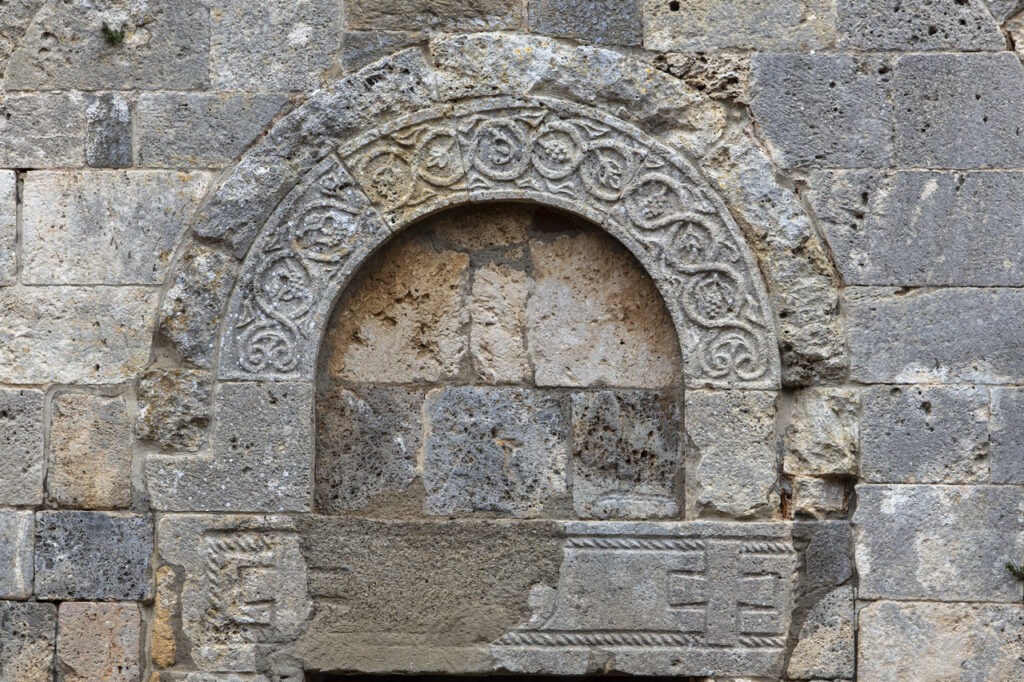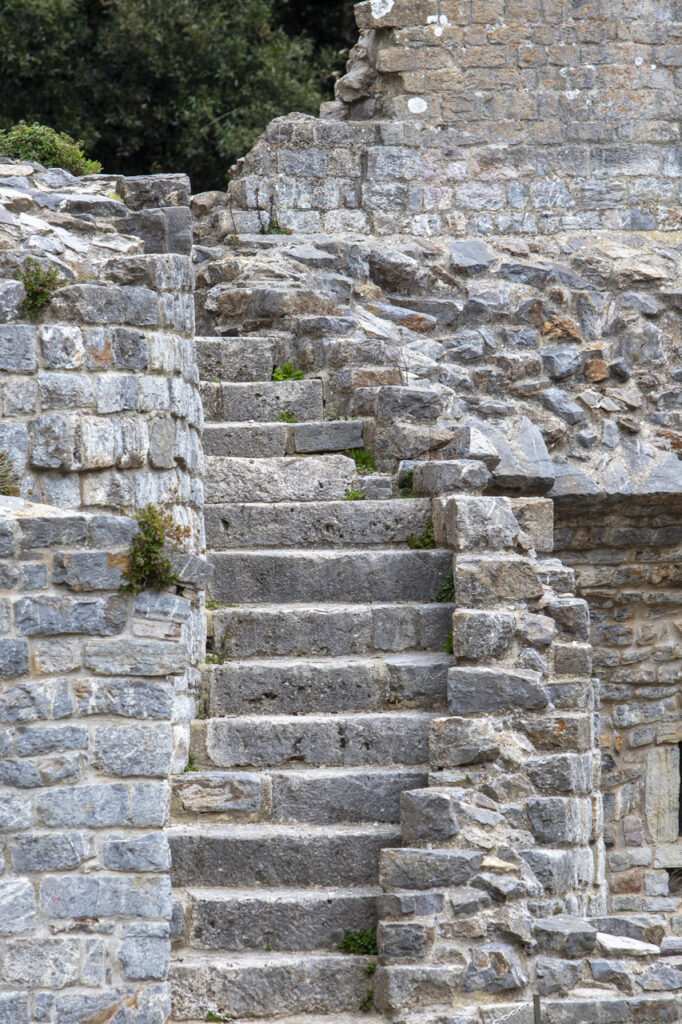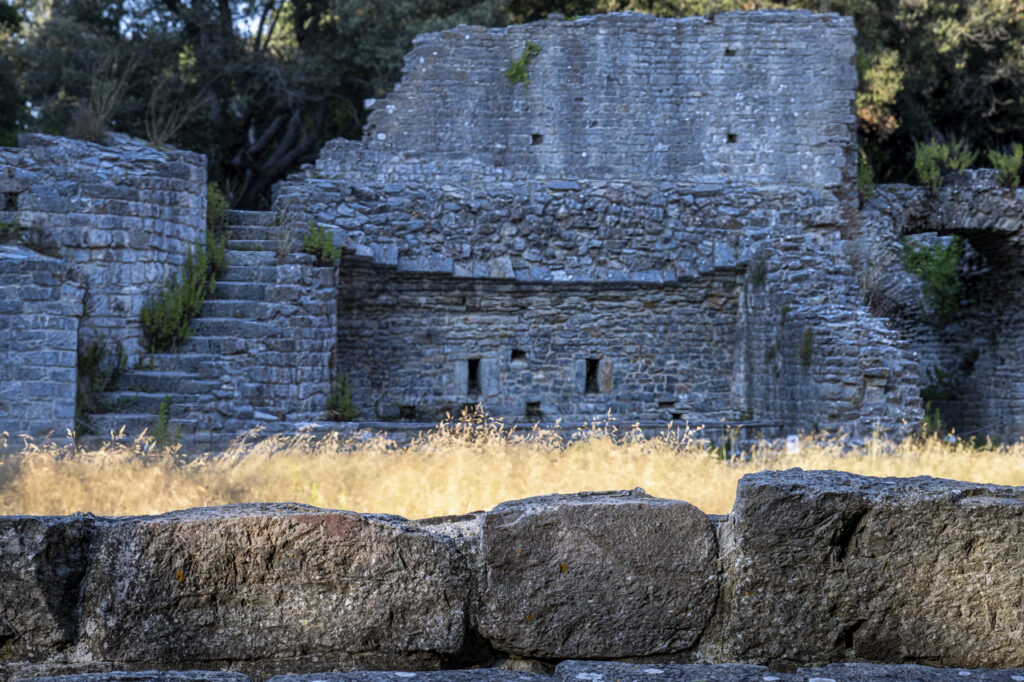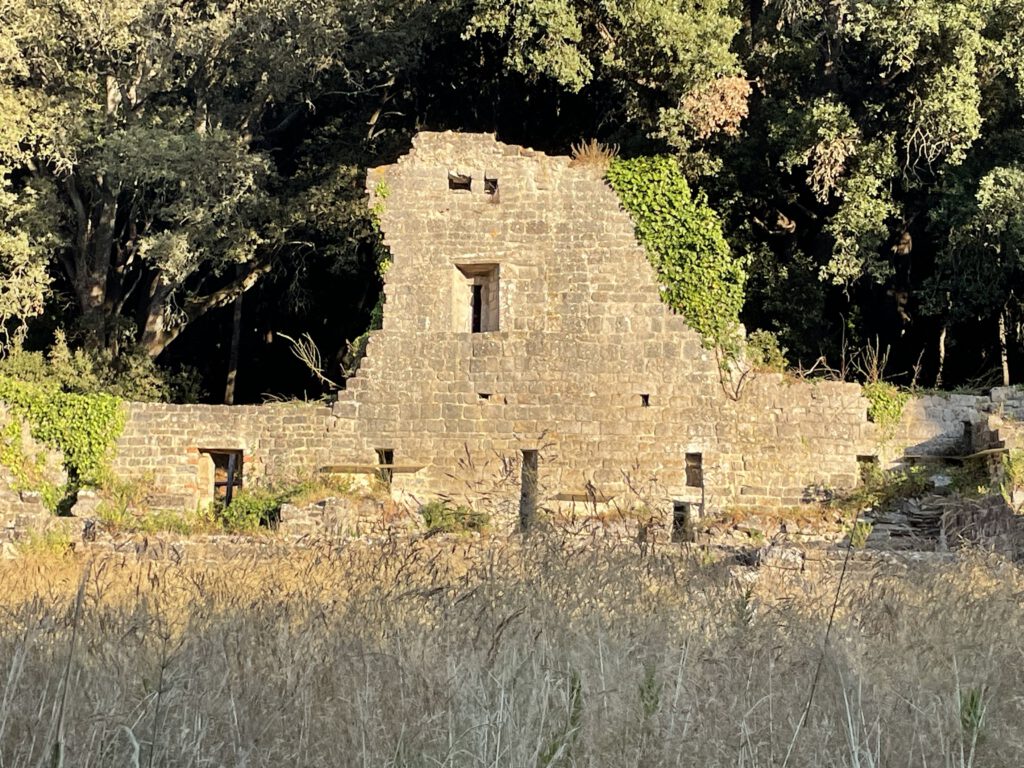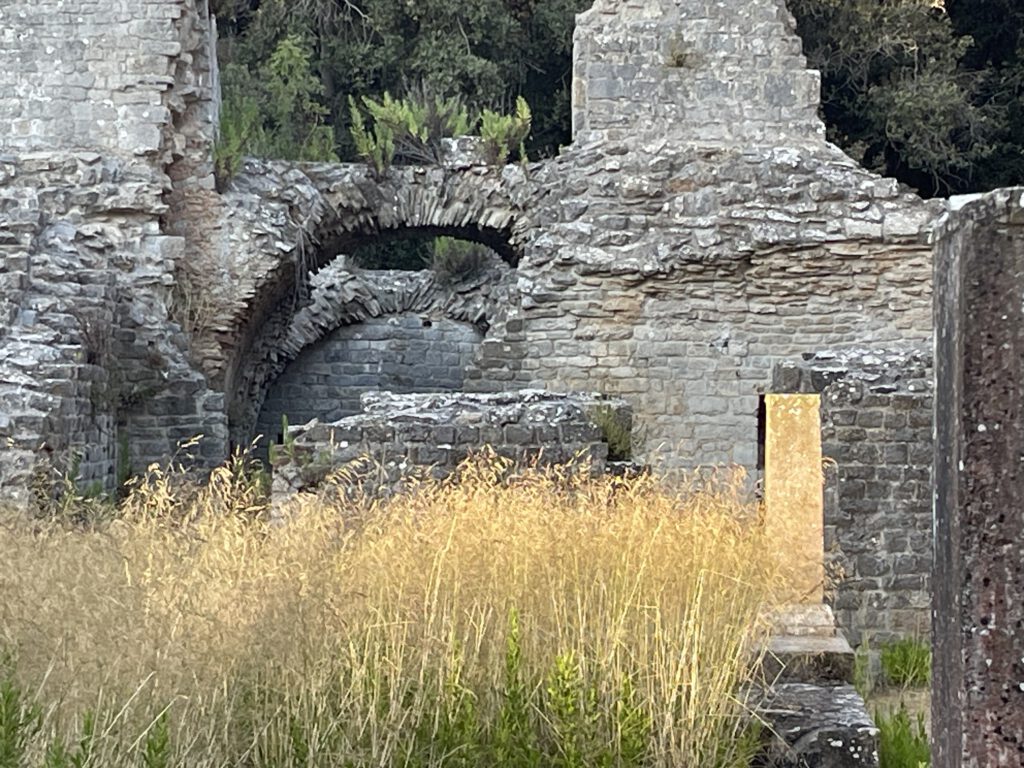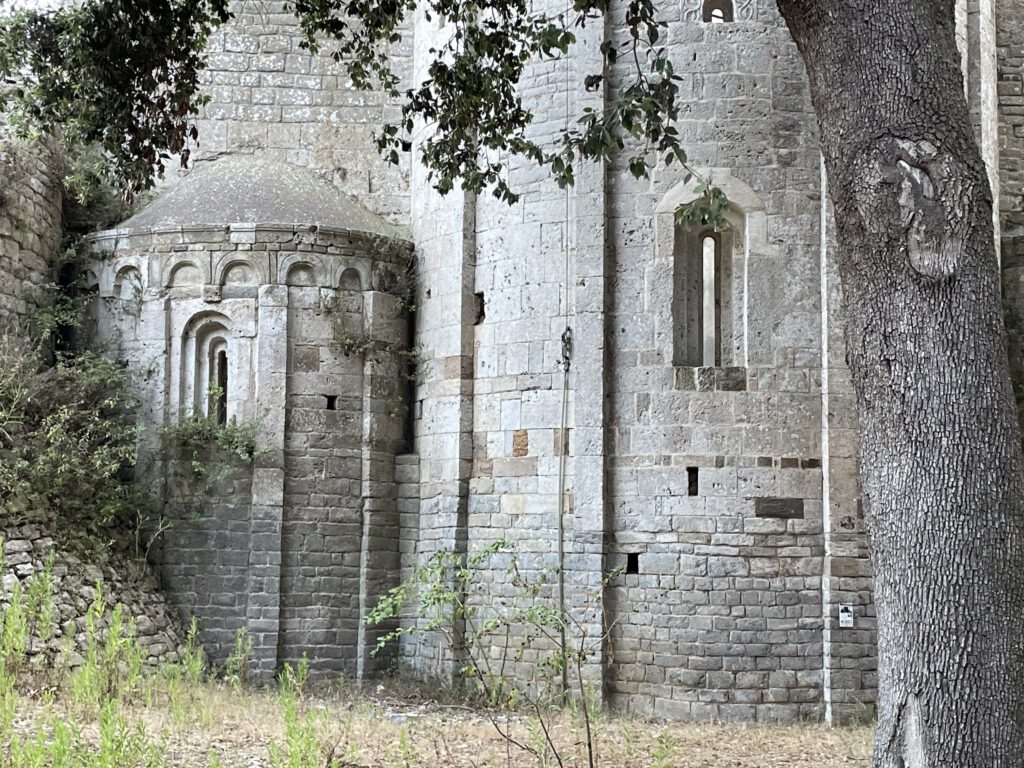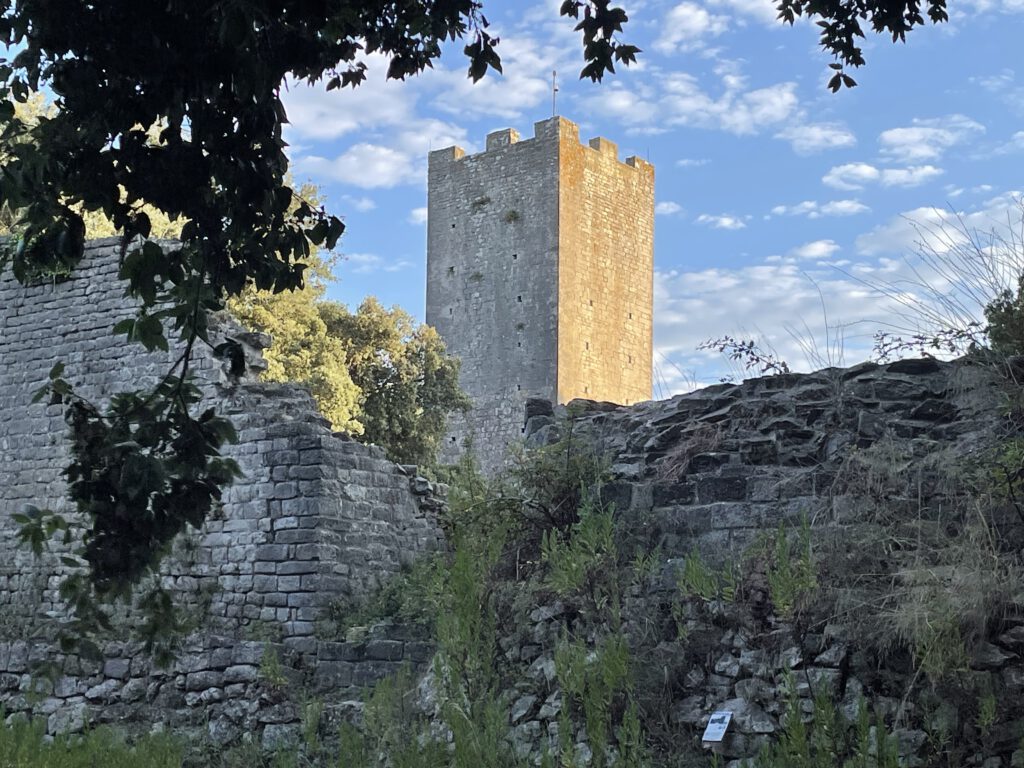A chapter of the rebirth after the year 1000
Su una sella quasi al culmine della catena dell’Uccellina, fra Poggio Lecci e Poggio Alto, al centro di una corona di alti lecci, si incontrano oggi le spettacolari rovine dell’abbazia di San Rabano. Il monastero benedettino, con la sua chiesa in stile romanico, viene fondato intorno al 1100 in una posizione strategica lungo la strada della Regina – oggi quasi perduta – che collega la via Aurelia con Cala di Forno, all’epoca un importante scalo sul mare. Sul posto c’è già una torre altomedievale, poi rimaneggiata e oggi chiamata dell’Uccellina.
Tuscany is in full recovery, and the Pope wants to defend the resources of the area from the aims of the Aldobrandeschi, the great feudal lords of the Maremma, and of Siena. The name of the abbey is Monasterium Arborense, or de Arboresio, from which the name of the subsequent Tenuta dell’Alberese derives. Within a few decades, its abbots were entrusted with the control of an area of approximately 6000 hectares including woods, salt marshes, livestock farms, hunting reserves, fishing ports on the coast and fish-filled inland marshes.
The life of the abbey
In the thirteenth century, the period of maximum splendor of Tuscany and the Benedictine order, San Rabano was a thriving abbey where twenty or thirty monks lived. Like all abbeys of the Middle Ages, it performs many of the functions of a city: library, notary’s office, pharmacy, manufacturing, hotel for foreigners and pilgrims who disembark or embark from Cala di Forno or Talamone.
Outside, in huts or rudimentary buildings of which only a few traces remain, live a few hundred people who work for the monastery. In fact, there is no forest around, like today, but a rationally exploited territory. In a first range there are vegetable gardens, which require almost daily work, in a second, more distant, arable land of cereals, for making bread, then olive groves and orchards, often on terraces, and finally the forest, periodically cut for wood and for pig farming. Next to the convent there must have also been a simple garden, that is, medicinal plants: their descendants are still found in the surrounding area.
In this period the whole area is inhabited, traveled and used as never before in its entire history.
A long decadence
After two centuries of prosperity, San Rabano was also heavily affected by the crisis triggered by the Black Death in the mid-14th century. The new depopulation forces the abandonment of most agricultural activities, while, as throughout the Maremma, transhumant breeding, hunting and fishing become established. In the interior the cities were then reborn, and the Benedictines are in a vocations crisis due to the competition from the new orders based in the city, such as the Franciscans and the Dominicans. Starting from 1200, Siena is invading the territories of the Maremma, until now dominated by the Aldobrandeschi. Already in 1303 the Pope entrusted San Rabano to the hospitaller monks of San Giovanni, the military order that manages the “mansions” along the pilgrimage routes. They are probably the ones who transformed San Rabano into a fortress. Even today, traces of it can be clearly seen on the back of the church, where a large surrounding wall was built above the apse. In 1439, in fact, the Sienese dismantled the fortress, which was degraded from an abbey to a “contado”, that is, a simple agricultural company, stripping it of useful stones, pieces of metal and anything that could be useful. The monks of San Giovanni, who will remain owners of the estate until the arrival of Napoleon, thus move to the Priory of Alberese, along the Aurelia, where one day Alberese will arise.
Rediscovery and rebirth
The abandoned abbey falls into ruins, and the forest closes in around it. Over time we almost even lose her memory. The name “San Rabano” was attributed to it by mistake much later, from that of Sancti Rabani Praeceptor, builder of the church of Alberese in 1587, and believed to be the last abbot of the abbey between the eighteenth and nineteenth centuries.
The rediscovery took place only in the twentieth century, with a first cycle of restorations in 1972 and the establishment of the Maremma Park in 1975 which began to bring visitors from all over Italy here.
Today the church has been equipped with a new roof, and the ruins of the monastery can be visited freely. You can still recognize the internal courtyard, the ovens, the service rooms and the guest quarters on the ground floor, and the monks’ quarters on the upper floor. But the best thing, at the end of the visit, is to close your eyes and imagine how all this must have looked eight centuries ago.
WHAT TO KNOW
WHERE TO GO

